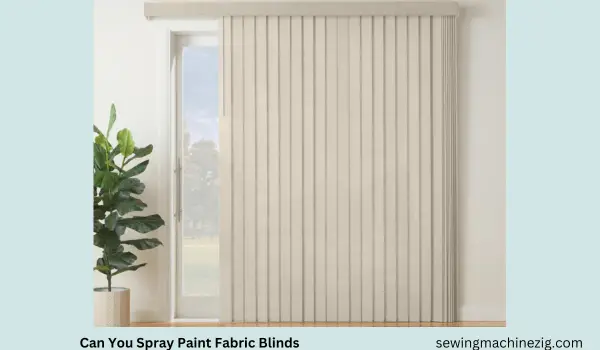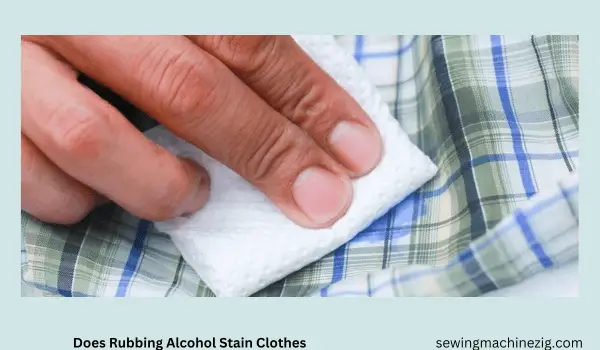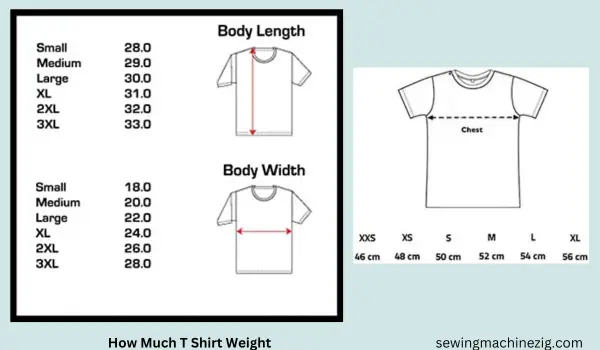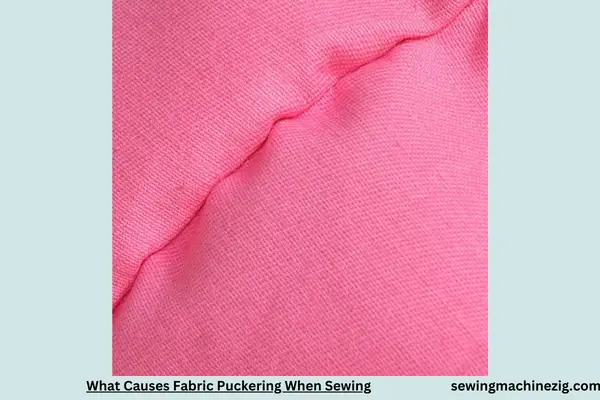
Embarking on a sewing project, enthusiasts may encounter the vexing issue of fabric puckering, leaving them pondering, “What Causes Fabric Puckering When Sewing?” This textile mystery unveils itself as a common challenge in the crafting journey.
Join us as we unravel the threads of causation, exploring the intricate interplay between materials and techniques. Understanding these nuances not only resolves puckering issues but transforms sewing from frustration to finesse. Whether you’re a novice or a seasoned seamstress, unlocking the secrets behind fabric puckering ensures each stitch contributes to a smooth and polished end result.
What Causes Fabric Puckering When Sewing Detailed Answer
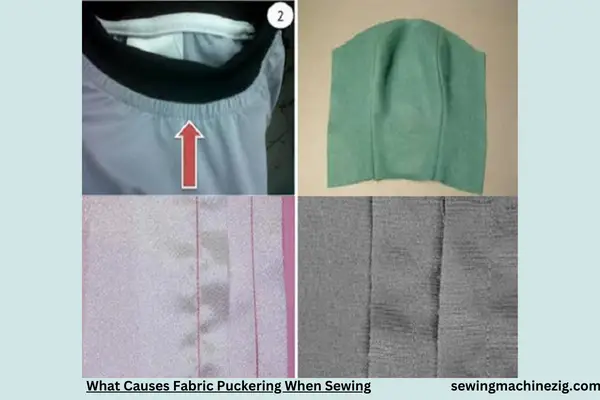
Step-by-Step Analysis: Unraveling the Enigma of Fabric Puckering in Sewing
Understanding the intricacies of sewing involves addressing common challenges, and one perplexing query often arises: “What Causes Fabric Puckering When Sewing?” In this comprehensive guide, we’ll embark on a step-by-step analysis, exploring the various factors contributing to fabric puckering and providing insights on mitigating this vexing issue.
Step 1: Needle Selection Matters
Initiate your investigation by examining the choice of needle. Using the wrong needle for your fabric can lead to puckering. Ensure your needle type and size align with the fabric weight. A ballpoint needle for knits and a sharp needle for woven fabrics can make a substantial difference.
Step 2: Thread Tension Troubles
Dive into the realm of thread tension, a critical element in sewing. Incorrect tension settings, whether too tight or too loose, can result in fabric puckering. Adjust the tension according to your fabric type, conducting tests on scrap material to achieve the optimal balance.
Step 3: Fabric Type Dynamics
Explore the characteristics of your fabric, as different materials react uniquely during sewing. Lightweight fabrics are particularly susceptible to puckering. Adjust your machine settings and techniques based on the fabric at hand, allowing for smoother stitching without unwanted gathers.
Step 4: Machine Maintenance Matters
A well-maintained sewing machine is key to preventing fabric puckering. Regularly clean the machine, change needles after prolonged use, and oil moving parts. A smooth-running machine ensures consistent stitching, minimizing the risk of puckering caused by uneven stitching.
Step 5: Pressing Precision
Uncover the importance of pressing in the fight against fabric puckering. Press your fabric before sewing to eliminate wrinkles and ensure an even surface. Throughout the sewing process, periodically press seams to set the stitches and prevent puckering caused by uneven tension.
Step 6: Stitch Length Strategy
Adjusting your stitch length can significantly impact fabric puckering. Experiment with different stitch lengths on scrap fabric to find the sweet spot for your specific material. Longer stitches are often advisable for lightweight fabrics to reduce the likelihood of puckering.
Step 7: Bobbin Tension Insights
Delve into the realm of bobbin tension, a subtle yet influential factor. Imbalances in upper and lower thread tension can lead to fabric puckering. Check and adjust the bobbin tension if necessary, ensuring a harmonious interplay with the upper thread during stitching.
Step 8: Walking Foot Wisdom
Consider the use of a walking foot, especially when dealing with challenging fabrics like knits or multiple layers. A walking foot helps feed the fabric evenly through the machine, reducing the likelihood of puckering caused by uneven fabric movement.
Step 9: Thread Quality Examination
Examine the quality of your thread closely. Inferior or old thread can contribute to fabric puckering. Opt for high-quality thread suitable for your fabric type, and ensure it smoothly runs through the machine, minimizing the risk of irregular stitches that lead to puckering.
Step 10: Finishing Flourish
Conclude your exploration by ensuring a proper finishing flourish. Backstitching at the beginning and end of seams secures the stitches, preventing unraveling and potential puckering. Additionally, inspect the overall stitch quality, making adjustments as needed to achieve a polished and puckering-free outcome.
In Navigating the puzzle of “What Causes Fabric Puckering When Sewing” involves a holistic approach. By meticulously addressing factors such as needle selection, thread tension, fabric type, and machine maintenance, you can transform your sewing experience into a smooth and puckering-free endeavor.
Eliminating Seam Puckering
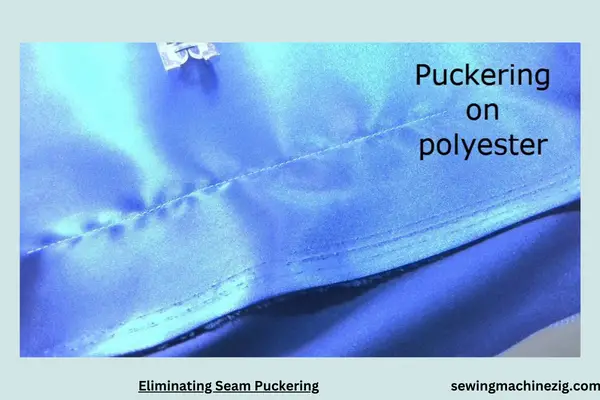
Step-by-Step Mastery: Banishing Seam Puckering for Flawless Results
Embarking on the journey to eliminate seam puckering is a crucial skill for any sewing enthusiast striving for impeccable results. In this comprehensive step-by-step guide, we will unravel the intricacies of “Eliminating Seam Puckering,” ensuring your sewing projects showcase smooth, professional-looking seams.
Step 1: Diagnosing the Issue
Begin by carefully examining the puckered seams to identify the root cause. Seam puckering can result from various factors, such as incorrect tension, fabric choice, or needle-related issues. Understanding the specific cause is essential for effective troubleshooting.
Step 2: Adjusting Thread Tension
The first line of defense against seam puckering is adjusting thread tension. Refer to your sewing machine manual to locate the tension adjustment settings. Experiment with different tension levels on scrap fabric until you achieve a balanced stitch with minimal puckering.
Step 3: Choosing the Right Needle
Selecting an appropriate needle plays a pivotal role in preventing seam puckering. Ensure you’re using the correct needle type and size for the fabric being sewn. Fine fabrics may benefit from a smaller needle, while heavier fabrics require a larger, more robust needle.
Step 4: Where to Adjust Thread Tension – Sewing Machine Controls
Locate the thread tension controls on your sewing machine. Adjust both the upper and lower thread tensions as needed. Gradual adjustments and test stitching on scrap fabric will help you find the optimal tension for your specific sewing project.
Step 5: Examining Fabric Quality
Evaluate the quality and type of fabric you’re working with. Puckering can occur if the fabric is too lightweight or prone to stretching. Experiment with stabilizers or interfacing to enhance the fabric’s stability and reduce the likelihood of puckering.
Step 6: Where to Choose the Right Needle – Needle Selection Guide
Consult a needle selection guide to ensure you’re using the right needle for your fabric. Needle packages often provide information on the recommended fabric types for each needle. Following these guidelines minimizes the risk of puckering.
Step 7: Exploring Stitch Length Adjustments
Experiment with stitch length adjustments to address puckering issues. Longer stitches can sometimes alleviate puckering, especially on lightweight fabrics. Test different stitch lengths on scrap fabric until you achieve the desired result.
Step 8: Ensuring Proper Presser Foot Engagement
Verify that the presser foot is properly engaged and applying even pressure across the fabric. Uneven pressure can contribute to puckering. Clean the presser foot and feed dogs regularly to ensure smooth fabric feeding during sewing.
Step 9: Where to Explore Stitch Length Adjustments – Sewing Machine Settings
Navigate through your sewing machine settings to locate the stitch length adjustment controls. Adjust the settings and observe the impact on fabric puckering. Fine-tune the stitch length until you achieve a smooth and consistent seam.
Step 10: Seam Reinforcement Techniques
Implement seam reinforcement techniques to prevent puckering, especially in areas prone to stress. Backstitching at the beginning and end of seams, as well as reinforcing with stay stitching on curved edges, can contribute to seam stability.
In mastering the art of “Eliminating Seam Puckering” involves a systematic approach, addressing factors such as thread tension, needle selection, fabric quality, and sewing machine settings. By diligently following this step-by-step guide, you’ll enhance your sewing skills, resulting in flawlessly smooth seams and professional-looking garments.
Garment Seam Pucker: Types, Causes And Remedies
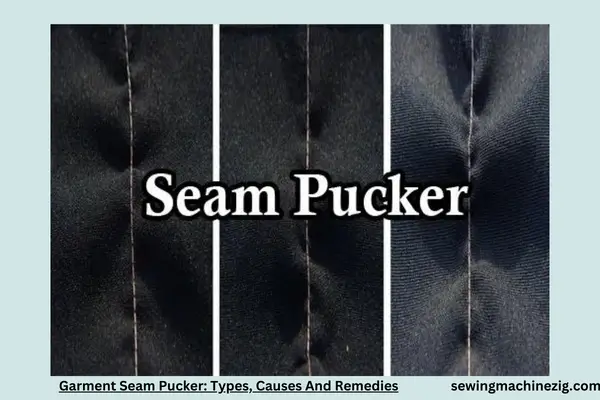
Step-by-Step Understanding: Tackling Garment Seam Pucker – Types, Causes, and Remedies
Embarking on the journey to address garment seam pucker requires a nuanced understanding of the various types, underlying causes, and effective remedies.
In this comprehensive step-by-step guide, we will delve into the intricacies of “Garment Seam Pucker,” providing insights into the types of puckering, the factors causing it, and actionable remedies to ensure your sewing projects boast impeccable seams.
Step 1: Identifying Types of Garment Seam Pucker
Begin by familiarizing yourself with the different types of garment seam pucker. Common varieties include gathering, waving, and roping. Understanding these distinctions is crucial for pinpointing the specific issues in your sewing projects.
Step 2: Causes of Gathering Pucker
Addressing gathering puckers involves recognizing the causes. Excessive fabric tension, uneven gathers, or improper stitching techniques can contribute to gathering puckers. Ensure that gathers are distributed evenly and stitches are consistent.
Step 3: Causes of Waving Pucker
Waving puckers manifest as a wavy appearance along the seam. Uneven fabric feeding, improper presser foot engagement, or irregular thread tension are common culprits. Adjusting these elements will help mitigate waving puckers.
Step 4: Where to Identify Types of Garment Seam Pucker – Visual Inspection
Conduct a visual inspection of your garment seams to identify the specific type of pucker. Examine the seam closely, checking for irregularities such as tight spots, waves, or uneven gathers. This visual assessment will guide your remediation efforts.
Step 5: Causes of Roping Pucker
Roping puckers result in a twisted or distorted appearance along the seam. Uneven fabric tension and inadequate presser foot pressure are frequent causes. Adjusting these factors will contribute to resolving roping puckers.
Step 6: Where to Examine Seam Quality – Critical Areas
Focus on critical areas of your garment seams during examination. Seams in curved or shaped areas are particularly prone to puckering. Thoroughly inspect these sections to identify and address any issues contributing to puckering.
Step 7: Remedies for Gathering Pucker
Remedies for gathering puckers include adjusting the stitch length, ensuring even fabric distribution, and using gathering feet or techniques. Experiment with these remedies on scrap fabric to find the most effective solution for your specific project.
Step 8: Remedies for Waving Pucker
Addressing waving puckers involves fine-tuning thread tension, ensuring proper presser foot engagement, and examining fabric feeding mechanisms. Practice stitching on scraps to achieve optimal settings and remedy waving puckers.
Step 9: Where to Find Remedies for Garment Seam Pucker – Sewing Resources
Explore sewing resources, including books, online tutorials, and sewing forums, for additional remedies tailored to specific puckering issues. Fellow sewers and experienced crafters often share valuable insights and techniques for resolving seam puckering.
Step 10: Remedies for Roping Pucker
To remedy roping puckers, focus on adjusting fabric tension, ensuring consistent presser foot pressure, and employing proper sewing techniques for curved seams. Practice on test pieces to refine your approach and eliminate roping puckers effectively.
In addressing garment seam pucker involves a meticulous examination of the types and causes, followed by targeted remedies. By diligently following this step-by-step guide, you’ll gain a comprehensive understanding of garment seam puckering and acquire the skills to produce flawless seams in your sewing projects.
Conclusion
In conclusion, understanding “What Causes Fabric Puckering When Sewing” is key to achieving impeccable stitching results. Fabric puckering can be attributed to various factors, from machine tension settings to needle and thread choices.
By addressing these issues, sewists can elevate the quality of their projects. The quest for smooth, puckering-free seams involves a nuanced understanding of the interplay between machine, fabric, and technique, ensuring that each stitch contributes to a flawless and professional finish.
FAQS
Q1: What causes fabric puckering during sewing?
A1: Fabric puckering during sewing can result from various factors. Common causes include incorrect thread tension, improper needle choice, using the wrong type of needle for the fabric, or insufficient presser foot pressure.
Q2: Does the sewing machine’s tension setting impact fabric puckering?
A2: Yes, improper thread tension settings on the sewing machine can lead to fabric puckering. Adjusting the tension to match the fabric being used is crucial in preventing this issue. “What Causes Fabric Puckering When Sewing“
Q3: Can using the wrong needle size cause fabric puckering?
A3: Yes, using the wrong needle size for the fabric can cause puckering. Thicker fabrics require larger needles, while finer fabrics need smaller needles. Matching the needle size to the fabric type is essential. “What Causes Fabric Puckering When Sewing“
A4: Yes, the needle type matters. Ballpoint needles are suitable for knits, while universal or sharp needles work well with woven fabrics. Using the appropriate needle type helps prevent fabric puckering. “What Causes Fabric Puckering When Sewing“
Q5: Does fabric composition affect the likelihood of puckering?
A5: Yes, fabric composition plays a role. Stretchy or lightweight fabrics are more prone to puckering. Adjusting the machine settings and using the correct needle can mitigate puckering on different fabric types. “What Causes Fabric Puckering When Sewing“
Q6: Can inadequate presser foot pressure cause fabric puckering?
A6: Yes, insufficient presser foot pressure can lead to fabric puckering. Adjust the pressure according to the fabric thickness to ensure even feeding and prevent unnecessary puckering. “What Causes Fabric Puckering When Sewing“

